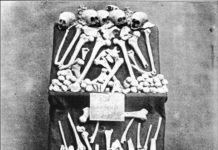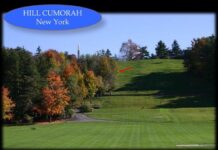A friend of ours recently asked a series of questions wanting to know how Jonathan Neville would respond. This friend of ours stated he thought between the one hill and two hill theory of Cumorah he gave a slight edge to the One-Hll Theory. I think Jonathan’s words below helped him a lot and I figured they would help each of you understand better how Jonathan feels. Rod, Wayne, and I feel very much the same as Jonathan about the Hill Cumorah and most of the other geography. Of course we each have a slight variance of opinion on some things which is healthy, as we continually share information with each other. We don’t all agree on the route of Mulek, or the Jaredites, but are very similar on the other items. In fact I would appreciate your opinions on all things about the Book of Mormon. Learning requires an open mind and many opinions that we can discuss.
Regular Black text below are words from our Friend. Red words are from Jonathan Neville.

Jonathan: (In response to our friends email) Thank you. I’ll address each one. Bottom line, it’s still the teachings of the prophets vs. academic speculation. Because I don’t see them listed here, I remain very interested in whatever teachings you have that actually contradict or even question the teachings of the prophets about the New York Cumorah.
Friend: Please look at these considerations concerning the location of the hill Cumorah.
1. Knowing that he and his people faced impending doom, Mormon “made this record out of the plates of Nephi, and hid up in the hill Cumorah all the records which had been entrusted to me by the hand of the Lord, save it were these few plates which I gave unto my son Moroni” (Mormon 6:6).
a. If this was the hill where Joseph Smith was to find the plates, why didn’t Mormon just leave them there.
Jonathan: Orson Pratt and others explained there were two departments in the hill, one for the depository and one for the abridged plates. This was wisdom because it took Joseph 4 years to overcome the temptation of just the abridged plates, as Oliver explained in detail in the 8 letters.
b. By Mormon separating the plates and giving a few plates to Moroni, this strongly implies that Moroni was to take them to a place where he would be safe. It’s difficult to imagine a situation where he would be by himself at a place for forty years where the Lamanites pledged to destroy all Nephites.
Jonathan: I’ve read this narrative but it doesn’t fit the text. The dying Mormon gave the plates to Moroni with the commandment to complete the record. Moroni finished his father’s record (Mormon 8-9). In Mormon 8:4, he says he would hide up the records and where he went after that didn’t matter. He didn’t say he buried them after wandering for 40 years. At some point, he added the abridgment of Ether’s writings. Still later, he added his own book (Moroni 1:1). This implies he was returning to the same spot periodically, which also makes sense because he was quoting his father’s own writings, which presumably were maintained in the depository.
c. Moroni spent the next forty years of his life wandering and writing and it is unlikely that he would continue to stay in that hostile environment for that long.
Jonathan: Moroni also says he did not make himself known to the Lamanites, but he was in their midst because he knew they fought among themselves. After the final battle, the area around Cumorah would be a relatively safe place because there was no one left there for the Lamanites to attack. Plus, Moroni knew the area well so he could survive. He wrote “I make not myself known,” which is the opposite of “I had to hide or flee.” He never says he traveled a long distance. The children of Israel wandered for 40 years (Num. 32:13). They spent around 38 of those years in one place, and they ended up only about 250 miles from where they started in Egypt. By contrast, Moroni was by himself. The last thing a solitary man would do is travel thousands of miles through unknown, hostile territory.
2. The words “Hill Cumorah” does not appear in the Doctrine and Covenant’s and in the Joseph Smith History.
Jonathan: D&C 128:20 refers to Cumorah. It was a letter Joseph wrote to the Saints. He sent it to the editor of the Times and Seasons for publication in September 1842. A year earlier, the Times and Seasons had republished Letter VII (“the fact that here, between these hills,” the entire Nephite nation was destroyed, etc.). Every reader of the Times and Seasons knew what Cumorah referred to.
As for Joseph Smith – History, which was compiled by his scribes (not written by Joseph), I’ve addressed that here: https://saintsreview.blogspot.com/2018/10/the-hill-in-new-york-problem.html
3. There is no historical evidence that Moroni called the hill Cumorah during his encounters with the Prophet Joseph Smith.
Jonathan: Joseph’s mother said Joseph referred to the hill as Cumorah even before he got the plates. In 1830, Parley P. Pratt said the hill was called Cumorah by Moroni himself.
4. The first documented person to identify the hill where Joseph Smith received the plates with the hill Cumorah appears to have been William W. Phelps in 1833. This was later followed by Oliver Cowdery in 1835.
Jonathan: The earliest extant documented reference we have today is the one by Parley Pratt, but Joseph’s mother and David Whitmer both said they heard it even before the Book of Mormon was published.
5. As far as we know, Joseph Smith never said the words “hill Cumorah”.
Jonathan: Joseph’s own mother quoted him saying “hill of Cumorah” before he even got the plates. Joseph dictated “hill Cumorah” in Mormon 6:4, 6, 11. We have very few of Joseph’s words, actually. He gave over 200 sermons for which we have no transcript or summary. He helped write the 8 historical letters, including Letter VII, and had it copied into his history as part of his life story, then had it republished by his brothers and others.
6. Evidence does suggest that Joseph shared the interest of his fellow Latter-Day Saints in any discoveries which might shed light on the authenticity and historicity of the Book of Mormon, wherever they came from, including those from Central America. This would suggest that the location of the hill Cumorah was in question.
Jonathan: You’re referring to the anonymous Times and Seasons articles, none of which mentioned or alluded to Cumorah. The New York Cumorah was never in question among any of Joseph’s contemporaries. Heber C. Kimball visited the site and noted the embankments were still visible. Two months before he died, Brigham Young spoke about the depository in the hill because he feared the knowledge would be lost otherwise. He was right. Today’s youth in the Church have never heard what the prophets have taught about the New York Cumorah.

7. Numerous statements have been made by the prophets since the time of Joseph Smith regarding the lands of the Mormon that would have a bearing on where the hill Cumorah should be located. These statements are both pro and con. Therefore, where does that leave us. I feel that we need to look at the physical and spiritual criteria that is laid out in the Book of Mormon itself.
Jonathan: This is the list of statements I’d like to see. None of the M2C intellectuals has produced this list, apart from anecdotal statements about ruins in Mesoamerica that they claim impact Cumorah because Mesoamerica is “too far” from NY. Thus, as I said at the outset, we have the specific teachings of the prophets vs. the speculations of the scholars.
8. There are over forty criteria that came come from the Book of Mormon text and these requirements should carry a considerable amount of weight. The Pasion River Model matches every one of these criteria.
Jonathan: These criteria are interpretations of the text, which is fine, but they are not the text itself. If you give me a link to the 40 criteria, I’ll show you how they are merely interpretations.
9. The Pasion River team feels that the Church was functioning in the Ohio Valley during the Preclassic Period and correlates with some of the activities associated with the Passion River Model.
Jonathan: This sounds like the “hinterlands” approach. Am I correct?
Rian: I don’t know much about the Pasion River theory. I think it speaks of Lehi’s landing at the Yucatan Peninsula and then from the Gulf of Mexico, the Nephite territory runs up through the State of Utah. A man named Thomas Bergman had a vendor table at our last conference in Provo, and I was only able to see briefly his map. Let me know if any of you know more than I do as he was going to send me a map.





